When you arrive in Istanbul, stroll down to the Galata Bridge. Order a glass of raki to sip while you watch the sun set over the city’s seven slopes. Ottoman minarets dominate the never ending cityscape, but it’s impossible to miss the Byzantine walls, Venetian Towers, and Parisian Townhouses that complete the ancient metropolis. Empires rose and fell here.
Above you, old men cast fishing lines down from the upper deck of the bridge while gulls swoop in to snatch the fish as they’re reeled upwards. The haunting sunset prayer call echoes from over three thousand mosques while party boats crawl their way along the Golden Horn to the Bosporus Straits. The city is alive.
You know you’re somewhere special.
It’s loud, it’s charismatic, it’s history itself, and it’s utterly breathtaking.
Welcome to Istanbul.
5 things you can’t miss in Istanbul
Get humbled by the Hagia Sophia
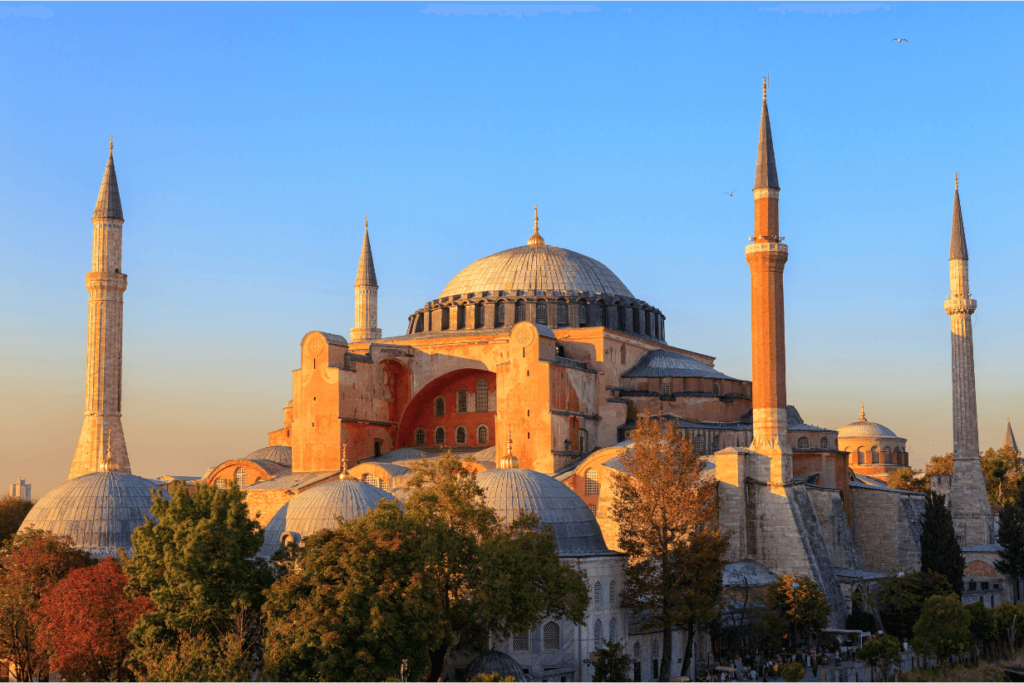
It’s likely you’ll spot the Hagia Sophia’s dome or one of its minarets from afar before you visit. Whatever you do, don’t leave Istanbul without going inside.
Built in 532 AD by Emperor Justinian as a Christian cathedral, the Hagia Sophia is staggering. Its construction is widely regarded as one of the most significant moments in architectural history, and it stood as the largest Christian cathedral for almost a thousand years. The sheer scale of the place is breathtaking, but the intricate details still somehow come out as the star.
The minarets were added by the Ottomans after they turned it into a mosque, and it became a museum in the early 20th century. It’s stood watch over the city for fifteen centuries and has been adapted to fit the desires of whichever ruler was in charge. The fact that it was built fifteen hundred years ago defies belief.
Even today, it finds itself at the center of Turkish life. Recently, President Erdogan turned the site back into a mosque, enraging the EU-leaning less Islamic population, as well as UNESCO, while sparking celebration in the conservative Muslim demographic that he’s garnered the support of.
Truly unmissable.
Get your bartering hat on at the Grand Bazaar
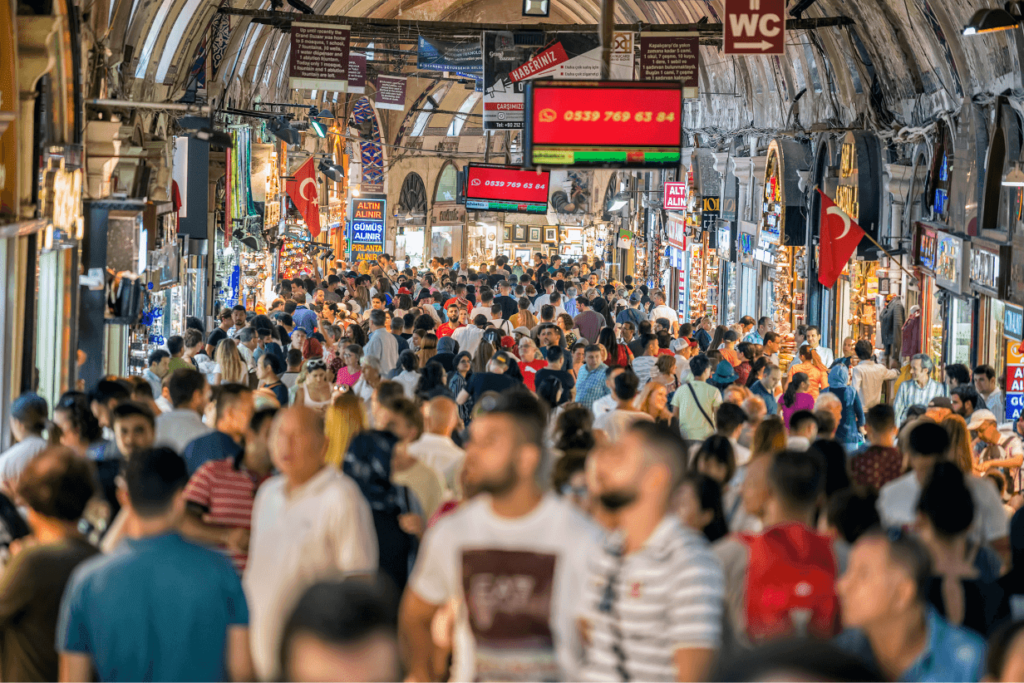
One of the oldest and largest indoor markets in the world, vendors have been plying their wares in the Grand Bazaar since the 1400s. Today, it most definitely veers in the direction of tourist trap, but that doesn’t mean you should avoid it.
As was the case with the Hagia Sophia, the scale of the bazaar is worth the visit alone. A vast labyrinth, getting lost is pretty much a part of the fun.
Despite literally thousands of vendors trying to chat you into a purchase, it never feels intimidating, like in some other markets. These guys are pros and have learned years ago that tourists are being taught not to trust them. In place of the sleazy salesman, jovial banter takes center stage, and you can’t help but enjoy the interactions.Bartering is still a big part of the experience, but don’t be that tourist. Only haggle if you have the intention to buy, and don’t come in with wholly unreasonable offers. It’s these interactions that have prompted many of the vendors to slap permanent price tags on their goods.
Explore the city’s neighborhoods
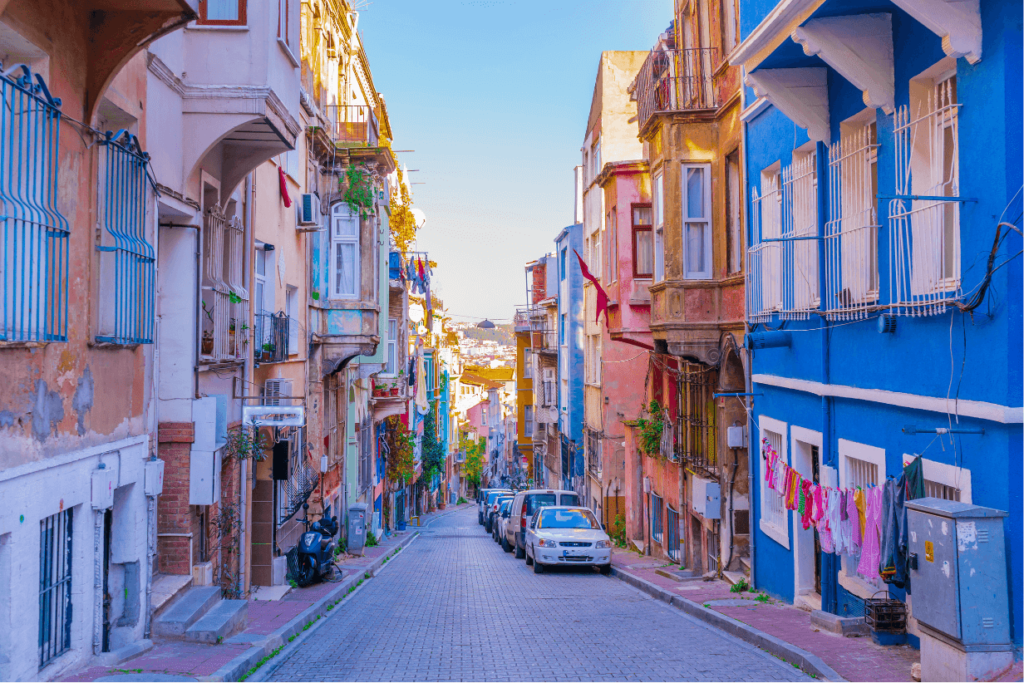
Istanbul is made up of loads of amazing areas, unique in their own way, thanks to the ethnic groups that lived (or still live) there. Devote a little time to finding some of these lesser-known gems to help elevate your Istanbul experience.
Balat is an excellent place to start. Once the Jewish district, the area is now predominantly Muslim. It’s known for its colorful homes that zig-zag along cobbled streets, with some brilliant hole-in-the-wall Turkish eateries. It’s also the site of some controversial conversion projects, with some of the houses being converted into hip cafes and restaurants, pricing out many of the locals. Dig a little further, and you’ll find a quieter side to Istanbul.
Kadikoy is found on the Asian side of the Bosphorus and highlights Istanbul’s changing landscape. While there are remnants of the Ottoman and Roman Empires, the main draw nowadays is the nightlife, restaurant, and cafe scene. It’s definitely worth an evening out or it can be combined with nearby Uskudar.
Sultanahmet is where you’ll spend a lot of time. It’s home to some of the biggest tourist draws, including the Hagia Sophia, the Blue Mosque, Topkapi Palace, and the hippodrome, among others. It’s always busy. But why wouldn’t it be?
Take a Turkish Bath
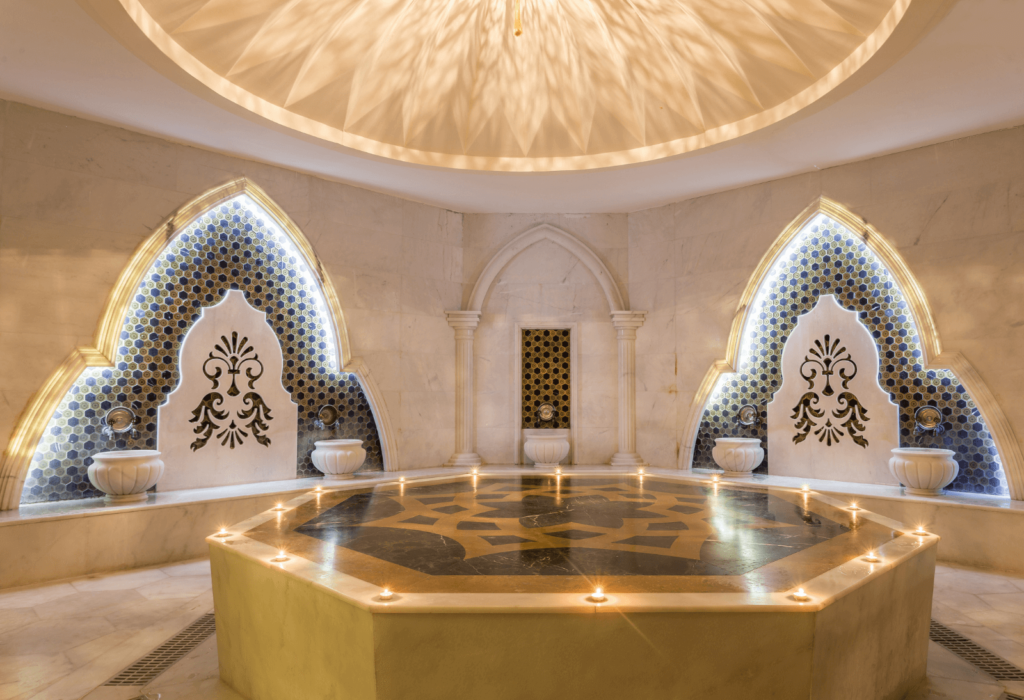
Did you really go to Turkey if you didn’t indulge in a Turkish bath, or hammam, as the locals call it?
The bathing culture in Turkey dates back to the 7th Century and traditionally involves getting scrubbed down with a kese, or handwoven washcloth. Then, you move through through various chambers typically made of marble, including hot steam rooms.
If you’re ready to soak and relax, the Kilic Ali Pasa Hamami baths are a popular luxury option for a great rate. A full body massage service is only about $50.
As a heads up, most hammam facilities are separated by sex and there are a few etiquette faux pas that are worth reading up on before you take the plunge.
Get hypnotized by whirling dervishes
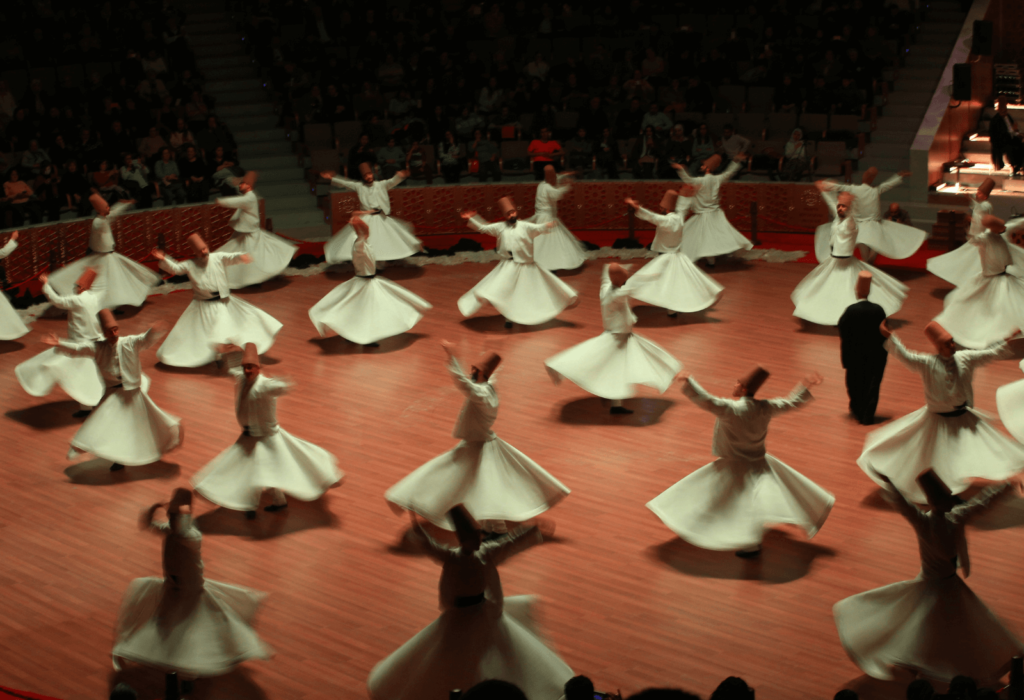
The Melevi, otherwise known as whirling dervishes, seem to defy the laws of physics and vertigo with their meticulous twirling. The spinning movement started as form of meditation in the Sufi sect of Islam. The dance, otherwise known as the Sema, is a mystical practice in the Sufi faith. It is believed that the entranced state of twirling allows the soul to transcend earth as they enter a trance-like state.
The ritual is just as entrancing to watch or will at least leave you wondering how they don’t get dizzy.
To get hypnotized by the captivating whirling practices of the Sufi, visit the Galata Mevlevi Lodge on a Sunday. The Lodge is also a museum and culture center, so you can rest assured you’re seeing an authentic Mevlevi organized performance and can then explore their displays to learn more. You’ll want to arrive early to get a good seat and get tickets at the box office.
Want to uncover the best of Istanbul?
Check out Next Stop: Istanbul for the best places to stay, eat, and explore in Istanbul!

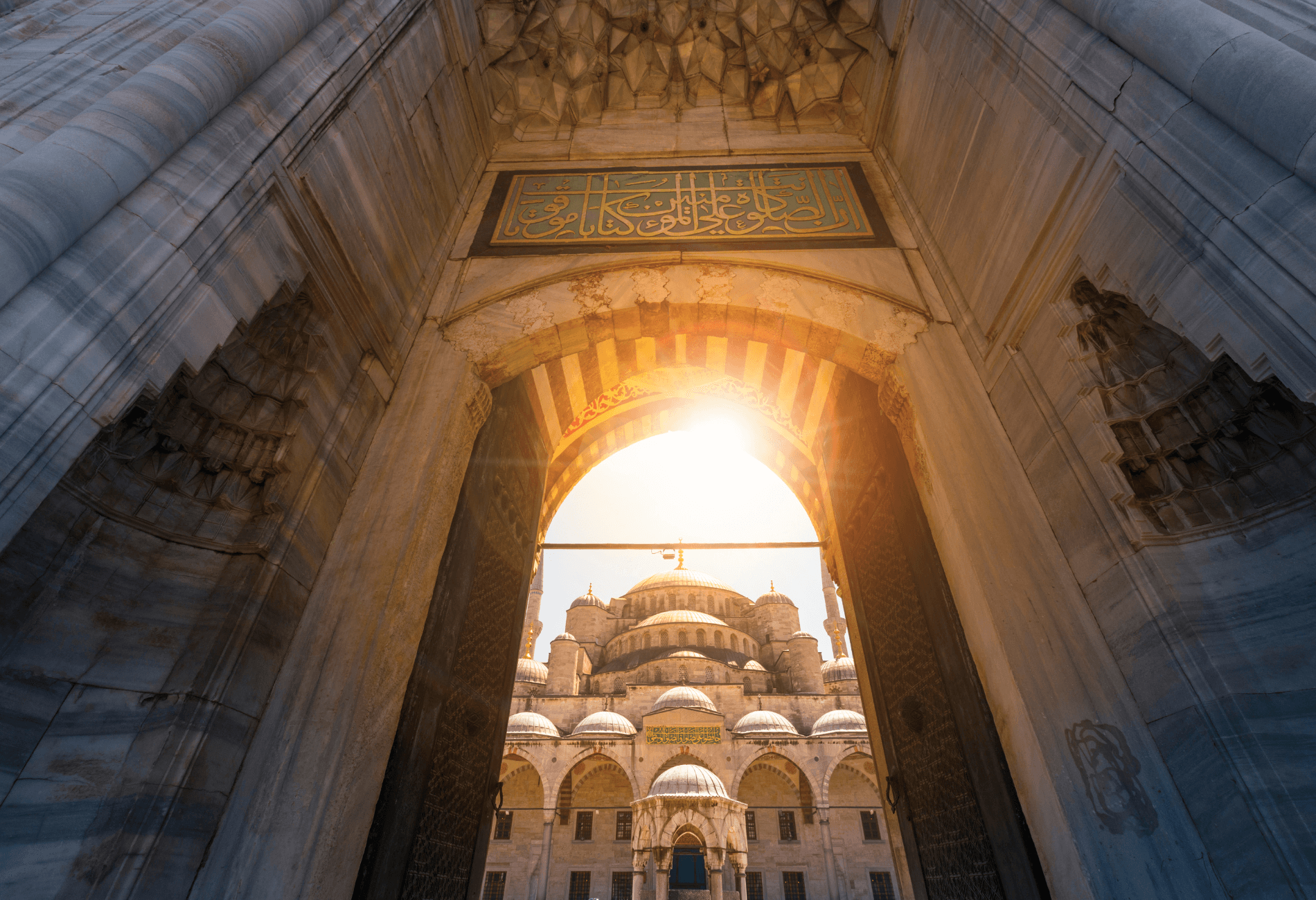







 by your friends at The Daily Navigator
by your friends at The Daily Navigator



